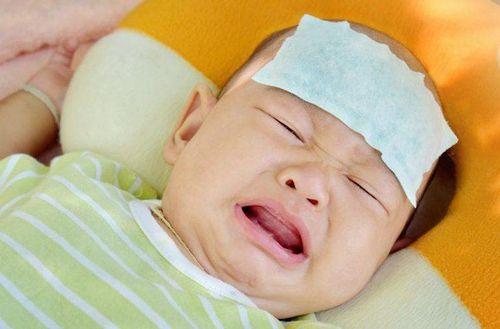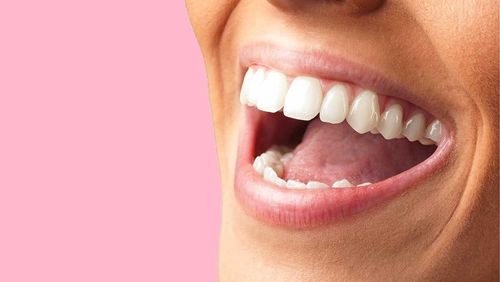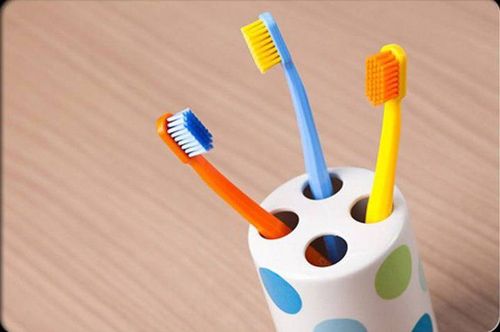This is an automatically translated article.
Dental care for children with congenital heart disease plays an important role in helping children live healthy and develop normally. Dental care for children has many difficulties with its own characteristics. Here are essential guidelines for parents of children with congenital heart disease.
1. The role of dental care for children with congenital heart disease
One of the dangerous complications seen in children with congenital heart disease is infective endocarditis. Children with cyanotic congenital heart disease have a higher risk of infective endocarditis (due to the flow of blood from areas of high pressure to areas of low pressure).
The oral cavity is one of the entry points for bacteria. From the oral cavity, bacteria can attach to sterile warts that form at the site of the damaged endothelium, developing infective endocarditis. The causative agent that enters from the oral cavity is streptococcus.
Manifestations of endocarditis in children include: Fever lasting more than 8 days without an exact cause, fatigue, deterioration of health, change in heart sound, enlarged spleen or suspected skin lesions , fever again after stopping antibiotics, fever within 2 months after cardiac surgery or interventional cardiology.
Therefore, in the process of taking care of a child with a congenital heart defect, parents need to pay attention to the problem of cleaning their baby's teeth.

Chăm sóc răng cho trẻ bị tim bẩm sinh cần để ý đến triệu chứng sốt của trẻ
2. How to take care of teeth for children with congenital heart disease?
A few tips for taking care of your baby's teeth are: Brush teeth thoroughly; develop a low-sugar diet; parents should not chew or bite food and then feed the baby; do not let children share spoons and chopsticks with people with tooth decay ; do not allow children to share toothbrushes with others,...
2.1 Dental care according to the age of the baby Before the child has teeth (6 months old), parents should give the baby a few tablespoons of water right after when suckling and burping to clean the oral cavity. At the same time, parents should use gauze or wet cloth, wrap it around their fingers, wipe and rub the baby's tongue and gums right after the baby suckles or eats.
After the baby has teeth (6 - 12 months old), parents should give the baby a few tablespoons of water right after feeding or eating. Next, use gauze or wet cloth, wrap around your finger, clean the inside and outside of the teeth, wipe the baby's gums and tongue.
For 1-year-old children (with 8 front teeth), parents should let them use a soft-bristled toothbrush with a small size. For children under 3 years old, parents should be careful when giving children toothpaste containing fluoride. Children over 3 years old can use children's toothpaste with fluoride in a pea-sized amount of toothpaste. Also, floss your child to clean the inside of the teeth.
2.2 Instructions for brushing children's teeth How to brush children's teeth is as follows: Place the bristles towards the gum line at an angle of 45° relative to the tooth surface, gently shake the brush. Should brush each group of teeth, each group of 2-3 teeth, brush all 3 teeth (outer side - visible when opening the mouth, inside - hidden behind, chewing surface). In the process of taking care of teeth for children with congenital heart disease, parents should brush their children's teeth by themselves until 9 - 10 years old because before this age children often do not have the skills to brush their teeth clean and proficient.
Usually children do not like toothpaste. However, parents do not need to worry because the brush (not the toothpaste) helps to clean the plaque on the teeth. If children can use toothpaste, parents should instruct children not to swallow the toothpaste. At the same time, only a pea-sized amount of toothpaste should be used for babies.

Chăm sóc răng cho trẻ bị tim bẩm sinh cần quan tâm đến cách sử dụng bàn chải răng
2.3 Take your child to the dentist When the child is 6 years old, parents should take the child to see the dentist for the first time. This helps to detect forms of tooth decay (especially caries in children with congenital heart disease caused by bottle-feeding) and promptly apply measures to prevent and treat tooth decay.
For babies with a congenital heart defect with cyanosis, often accompanied by physical retardation, the child has to suckle milk longer and feed several times a day, the time to eat solid foods is slower, so it is necessary to take care of their teeth more carefully. . Parents should take their baby to a dental check-up once every 3 months. When you go, you should bring a full record of heart disease so that the dentist can understand the baby's situation. There are special cases, children will have a cardiovascular examination before performing dental interventions.
2.4 Prevention of infective endocarditis It is necessary to prevent infective endocarditis before performing oral interventions such as: tooth extraction, denture implantation, root canal treatment, periodontal surgery, instrument placement orthodontic treatment, local anesthetic injection, tartar removal,... The principle is to use anti-streptococcal antibiotics 1 hour before the procedure to kill bacteria, repeat the second dose at 6 hours for surgery high-risk technique. The most commonly used antibiotic is Amoxicillin, if the child is allergic, Pristinamycin (oral) or Vancomycin (intravenous route).
Dental care for children with congenital heart disease is very necessary, requiring close coordination of the family with a cardiologist, a dentist. From there, the child will have good health, avoiding the unfortunate consequences that may occur.
Follow Vinmec International General Hospital website to get more health, nutrition and beauty information to protect the health of yourself and your loved ones in your family.
Please dial HOTLINE for more information or register for an appointment HERE. Download MyVinmec app to make appointments faster and to manage your bookings easily.













